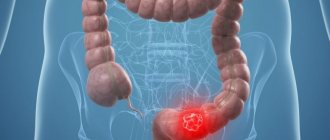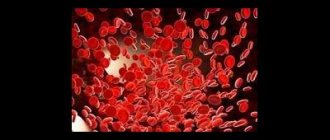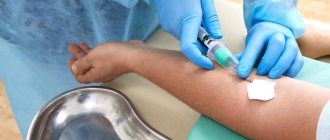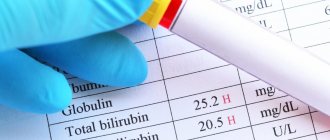Synonyms: C-reactive protein, CRP, CRP
C-reactive protein is a blood component that provides the body's primary response to tissue damage and inflammation. This is a fast phase protein; it only stimulates the immune response to the pathological process. Therefore, CRP is usually not detected in the blood of a healthy person.
A blood test for CRP allows you to determine the presence of the disease and determine the stage and severity of its course. Also, based on the results of this study, specialists evaluate the effectiveness of the prescribed course of therapy, which makes it possible (in the absence of positive dynamics) to promptly change the treatment regimen.
General information
CRP is produced in liver cells (hepatocytes) immediately after damage has occurred, the provoking factors of which can be bacteria, fungi, antigens, various immune complexes, etc.
The level of C-reactive protein directly depends on the type, form (acute, chronic), stage and activity of the disease. Within the first 4-6 hours after cell damage, active synthesis of CRP begins, and after a day its density increases exponentially.
With early diagnosis of the disease and timely treatment, within a few days the analysis will show a decrease in the concentration of CRP. The indicator will be completely reset only 1-2 weeks after the start of conservative therapy.
Chronic pathologies are characterized by an undulating course; accordingly, CRP will increase during the period of exacerbation and independently decrease during remission (subsidence of clinical symptoms).
A biochemical blood test with determination of CRP values makes it possible to distinguish a bacterial disease from a viral, fungal or parasitic one. It is known that in case of viral pathology, CRP does not increase much, but in the case of a bacterial infection it can increase several times. Also, a high concentration of C-reactive protein may indicate malignancy, injury, or necrosis (death) of tissue.
CRP analysis plays an important role in the diagnosis of atherosclerosis. If the level of protein in the plasma increases, then we can talk about the pathology of the vascular walls and the onset of the inflammatory process. Additional diagnostics will reveal what kind of disease is developing: stroke or heart attack, coronary artery disease, hypertension, atherosclerosis, etc.
In newborns, liver function is insufficient, so the level of C-reactive protein may not increase even during acute inflammatory processes and sepsis (blood infection). Antibacterial treatment in infants should be initiated when CRP concentrations exceed 12 mg/L.
What do increased indicators mean?
The degree of increase in C-reactive protein usually correlates with the volume, nature and severity of tissue damage.
An increase in CRP to 30 mg/l may indicate viral diseases - ARVI, rotavirus infection, etc.; it is found in malignant tumors, rheumatic diseases outside the acute stage (systemic lupus erythematosus, dermatomyositis, systemic scleroderma, rheumatoid arthritis, etc.).
An increase in CRP to 100 mg/l and higher, as a rule, accompanies various acute bacterial infections (angina, pneumonia, appendicitis, acute cholecystitis, pyelonephritis, etc.), exacerbations of chronic infectious diseases and rheumatic diseases, as well as various tissue damage (surgical intervention , myocardial infarction, etc.).
The most significant increase in CRP - up to 300 mg/l or more is possible with extensive burns and sepsis, when bacteria from the lesion enter the blood and spread throughout the body.
Indications
A referral for the determination of C-reactive protein can be carried out by an immunologist, infectious disease specialist, internist, pediatrician or general practitioner.
- Prof. examinations of workers of social institutions.
- Comprehensive examination of people of older age groups.
- Analysis of the state of the cardiovascular system after coronary artery bypass surgery.
- Monitoring the effectiveness of treatment of cardiovascular pathologies.
- Monitoring the condition of patients after angioplasty (an operation to restore the lumen of blood vessels).
- Differential diagnosis of inflammatory, bacterial, viral, fungal, parasitic and infectious diseases.
- Monitoring the effectiveness of antibacterial therapy.
- Monitoring the treatment of chronic diseases, preventing relapses.
- Diagnosis and treatment of cancer patients.
- Determining the risk of developing cardiovascular pathologies in diabetics, as well as patients with atherosclerosis and undergoing hemodialysis.
- Control of cardiovascular disease therapy with statins and aspirin.
Additional examination if the indicator deviates from the norm
A rise in body temperature in combination with an increase in the level of C-reactive protein can accompany generalized (widespread) and any local lesions - infections of the skin and subcutaneous fat, respiratory and dental infections, infections of the eyes, ENT organs, gastrointestinal tract, cardiovascular system, urological infections, infections of the central nervous system, bones and joints.
Depending on the clinical picture, examination and treatment of such patients is carried out by doctors of different specialties - therapists, surgeons, specialized specialists, including ENT specialists, dentists, gynecologists, urologists, rheumatologists.
As additional research, each specific case may require a wide variety of instrumental and laboratory diagnostics.
Increasing the level of high-sensitivity CRP entails the identification of other risk factors for cardiovascular disease. To do this, a blood test is performed for lipid spectrum, fibrinogen, homocysteine, glucose, uric acid, as well as ultrasound examination of the vessels of the neck and heart.
Sources
- Ershov A.V. C-reactive protein in the diagnosis of community-acquired pneumonia. Consilium Medicum, journal. 2021, 21(3): 15-19 p.
- Khorolets E.V., et al. Diagnostic significance of C-reactive protein in the genesis of pathologies of the cardiovascular system. Journal of Basic Medicine and Biology. No. 1. 2013. pp. 23-27.
Normal value for C-reactive protein
- Normally, the concentration of CRP in a healthy person varies between 0-5 mg/l.
To assess the risk of developing cardiovascular pathologies, the following values can be used:
| Probability of development | SRP, mg/l |
| Low | less than 1 |
| Average | 1-3 |
| High | 3-10 |
| Dangerous (requires repeated examination for CRP and the appointment of additional diagnostic procedures) | more than 10 |
Complexes with this research
Male anti-aging diagnostics Monitoring key indicators in men aged 40+ 13,300 R Composition
Rheumatoid arthritis Monitoring the effectiveness of treatment and assessing the prognosis of the disease 3,720 R Composition
Inflammation of the joints Risk indicator for the development of systemic manifestations of rheumatoid arthritis 860 R Composition
IN OTHER COMPLEXES
- Women's anti-aging diagnostics RUB 12,070
- Preventive check-up RUB 11,960
- Advanced women's anti-aging diagnostics RUB 28,680
- For those at risk of COVID-19 RUB 4,510
- Advanced anti-aging diagnostics in postmenopause RUB 29,230
Interpretation of results
Normally, in the blood of a healthy person, C-reactive protein is completely absent or is in a negligible concentration.
Exceeding the norm of CRP may indicate the following pathologies:
- acute bacterial diseases (sepsis in newborns, tuberculosis);
- meningitis (inflammation of the soft tissue around the brain);
- postoperative complications (wound infection, sepsis);
- neutropenia (decrease in the concentration of neutrophils in the blood);
- tissue damage as a result of injury, surgery, burns;
- acute myocardial infarction;
- malignant processes in the body with metastasis;
- hypertensive crisis (a sharp increase in blood pressure to individually high levels);
- diabetes mellitus (increased blood glucose);
- hormonal imbalances (increased levels of the hormones estrogen or progesterone);
- systemic rheumatic pathologies;
- atherogenic dyslipidemia (low cholesterol levels with increased triglyceride levels);
- chronic cardiovascular pathologies (coronary heart disease, angina pectoris);
- relapse of infectious and inflammatory processes;
- transplant rejection reaction;
- secondary amyloidosis (disorder of protein metabolism).
It should be taken into account that the concentration of C-reactive protein differs significantly for different diseases.
- In case of viral pathologies, metastatic cancer (stage 4), as well as indolent rheumatic diseases, the protein level can be increased moderately - up to 30 mg/l;
- In case of recurrent chronic inflammatory diseases, bacterial infection, acute myocardial infarction, the concentration of C-reactive protein can be in the range of 40-100 mg/l. The same values are observed in patients in the postoperative period;
- Generalized infections, extensive burns, sepsis and other life-threatening and health-threatening conditions can give extremely high values - more than 300 mg/l;
An increased concentration of CRP in healthy people in the absence of complaints and clinical symptoms may indicate the development of oncology.
What may affect the results
A number of factors may influence the results of the study:
- Intense physical activity, which should be avoided 2-3 days before the test, as it can lead to damage to muscle tissue and, accordingly, an increase in CRP. This is especially true for athletes and people who regularly visit gyms: any muscle injury leads to an increase in CRP levels.
- Taking painkillers and antipyretics from the group of non-steroidal anti-inflammatory drugs can reduce the actual level of CRP by reducing the severity of inflammation. There is evidence that statins used to lower blood cholesterol levels also have a similar effect.
- The presence of implants and grafts in the body.
- Drinking alcohol and/or fatty foods on the eve of the study.
Methods for determining SRP
CRP is mainly determined by enzyme-linked immunosorbent assay (ELISA). Unlike the ESR test, the CRP test is a more accurate marker of inflammation. This is because CRP appears immediately in the early stages of inflammation, and the erythrocyte sedimentation rate changes after a certain period of time. After the cessation of the inflammatory process, CRP drops to normal almost immediately, and ESR drops slowly and remains elevated for some time.
Also, ESR is influenced by gender, age and some other parameters; they do not affect CRP.
The C-reactive protein test is performed in the laboratory; if necessary, it will be ready in less than an hour, which allows for emergency diagnosis in severe cases.
What is a CRP test?
C-reactive protein is a complex polysaccharide.
It is so named because it reacts with streptococcal polysaccharide, binding bacteria and preventing them from entering the bloodstream. They are also prepared for subsequent destruction by the immune system. This analysis is nonspecific - it means it is impossible to tell from the result in which organ inflammation occurs, but it shows the presence of the process itself, as well as the degree of its intensity. Along with analysis of ESR (erythrocyte sedimentation rate) and white blood cell count, it is used to quickly identify acute inflammatory processes in the body.
The reasons for its increased CRP level may include:
- bacterial or fungal infections;
- viral diseases such as ARVI, influenza and others;
- damage to the structure of tissues and organs - trauma or surgery;
- tumors and metastases;
- autoimmune processes (damage to the body’s own tissues and organs by cells of the immune system) - vasculitis, rheumatoid arthritis, etc.;
- myocardial infarction.
Normally, CRP does not exceed 10 mg/l, and this indicator does not depend on the gender or age of the patient. The protein itself serves as a tool for the immune system in the fight against various pathogens. But it has a side property - it promotes the deposition reaction of fats (in particular cholesterol) on the walls of blood vessels, which negatively affects the state of the cardiovascular system.









